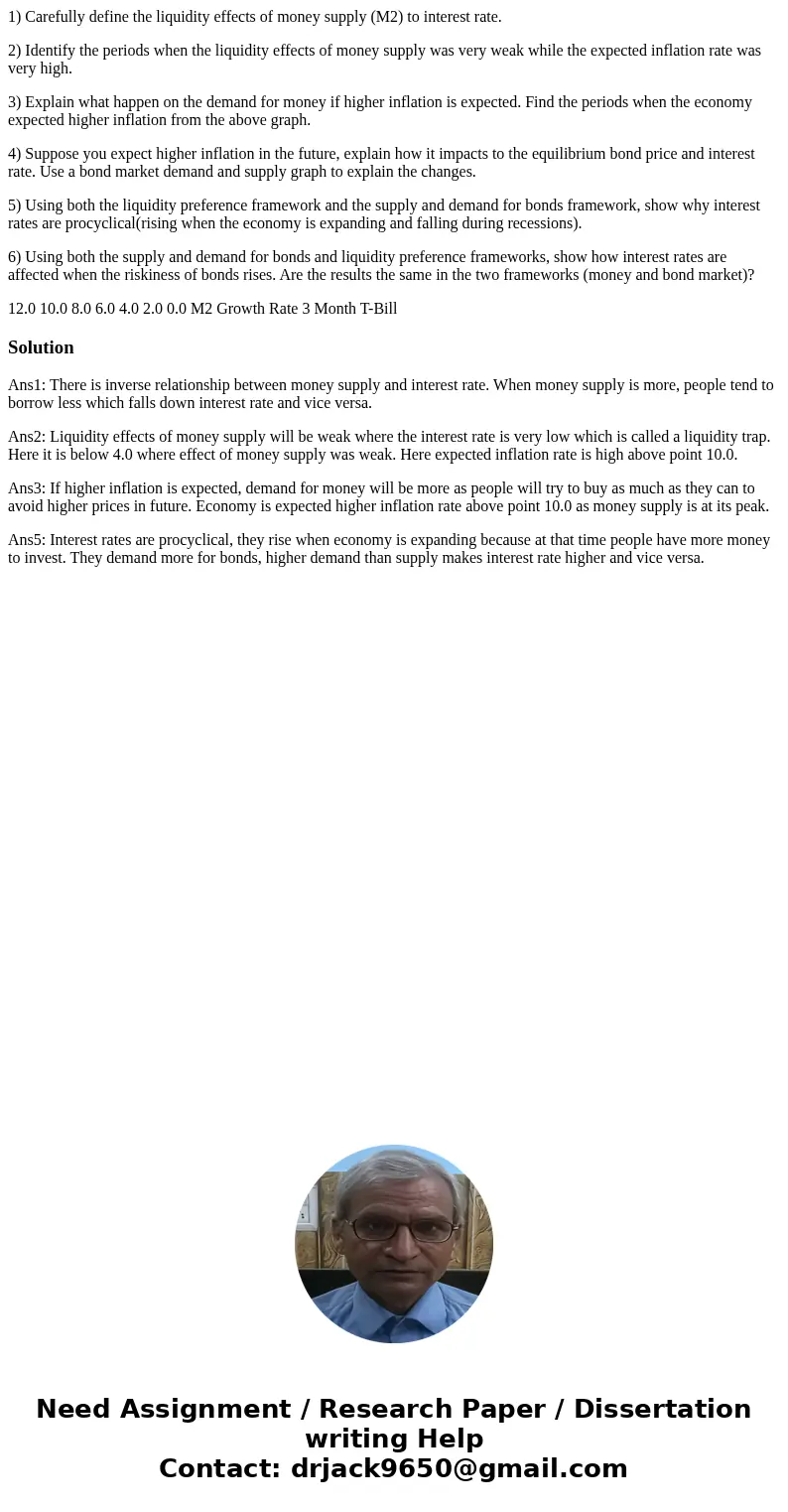1 Carefully define the liquidity effects of money supply M2
1) Carefully define the liquidity effects of money supply (M2) to interest rate.
2) Identify the periods when the liquidity effects of money supply was very weak while the expected inflation rate was very high.
3) Explain what happen on the demand for money if higher inflation is expected. Find the periods when the economy expected higher inflation from the above graph.
4) Suppose you expect higher inflation in the future, explain how it impacts to the equilibrium bond price and interest rate. Use a bond market demand and supply graph to explain the changes.
5) Using both the liquidity preference framework and the supply and demand for bonds framework, show why interest rates are procyclical(rising when the economy is expanding and falling during recessions).
6) Using both the supply and demand for bonds and liquidity preference frameworks, show how interest rates are affected when the riskiness of bonds rises. Are the results the same in the two frameworks (money and bond market)?
12.0 10.0 8.0 6.0 4.0 2.0 0.0 M2 Growth Rate 3 Month T-BillSolution
Ans1: There is inverse relationship between money supply and interest rate. When money supply is more, people tend to borrow less which falls down interest rate and vice versa.
Ans2: Liquidity effects of money supply will be weak where the interest rate is very low which is called a liquidity trap. Here it is below 4.0 where effect of money supply was weak. Here expected inflation rate is high above point 10.0.
Ans3: If higher inflation is expected, demand for money will be more as people will try to buy as much as they can to avoid higher prices in future. Economy is expected higher inflation rate above point 10.0 as money supply is at its peak.
Ans5: Interest rates are procyclical, they rise when economy is expanding because at that time people have more money to invest. They demand more for bonds, higher demand than supply makes interest rate higher and vice versa.

 Homework Sourse
Homework Sourse